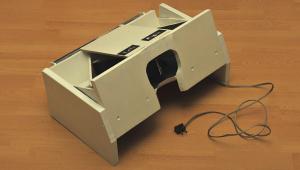Front Page
Steve Berman's Six Steps To Free-Lance Photojournalism
| "When showing your portfolio it is a good idea to offer up a variety of choices--some verticals, some horizontals, some wides, and some tight details." "If living life on
a schedule is for you, then forget a career in free-lance journalism,"
says Steve Berman, a photo editor at The New York Times. "This
job means living your life between assignments. It grinds up photographers.
You have to love it. The beauty of journalism (the real news opposed
to features) is timing. If you're not there when it's happening,
you've got no story." |

















































